A multitude of events has conspired to prevent me from writing about the Natural Wonders question I had planned, so I’ll save that one for next time and instead share one from the archives — lots of folks have subscribed since this issue originally went out over two years ago. I hope you enjoy it!
Beech trees are my husband’s favorite tree. The fact that he even has a favorite tree lets me know he’s a great human being and worth keeping. I think he’s onto something in his affection for these trees – beeches are oftentimes massive, especially when you find them near water; their smooth bark vaguely resembles skin, making them seem slightly human; and their branches often contort into interesting shapes.
Near our house we have many of these beech trees, which tend to appear in clustered groves because they reproduce by sending out root suckers underground. While walking our hiking trail, which meanders through the beeches, I’ve noticed that in the fall their leaves turn a beautiful bronze color but they don’t fall off like the leaves of other tree species. Long into the cold, early days of spring the beeches keep their coppery clothing, until the new buds push out and cast off last season’s leaves.
This has caused me to wonder:
Why do beech trees keep their leaves all winter?
Most deciduous trees go through a natural cycle of creating new leaves in the spring, using these leaves to produce chlorophyll to feed the entire tree over the course of the next several months, and then in the fall when cold weather signals the need to hunker down for the winter, the tree withdraws the green chlorophyll to reveal the true color of the leaves underneath before they wilt and fall away. The dead leaves that cover the forest floor create mulch that helps roots retain water and eventually becomes nutrients for the surrounding plants and trees.
If this is the natural way of things, why don’t beech trees do the same? Why hold onto this dead material on their branches for so long?
It turns out it’s not just beeches that do this – some oaks do as well, along with witch hazel and hornbeam trees. Typically, it happens with smaller mid-story trees but sometimes the lower branches of larger oaks will hold onto their leaves. When plants hold onto dead material like this, it’s called marcescence.
These small oak saplings have retained their leaves into deep winter:
It turns out that scientists aren’t exactly sure about why some trees do this. But there are a few theories:
One theory is that by keeping their leaves these trees discourage browsing animals, such as deer and moose, from nibbling their branches. One study found that deer chose to eat bare branches over branches with dead, dry leaves on them. By keeping their leaves, beeches and oaks then have a leg up in the spring on the other trees and saplings in the forest that served as fodder for the hungry deer all winter.
If you were a deer, wouldn’t the sapling branch below look tastier than the scraggly, leafy ones in the photo above?
Another theory is that these smaller, mid-story trees keep their leaves through the winter so that in the spring they create fresh mulch for their roots after much of last autumn’s ground leaves have rotted away. This allows them to conserve water for their root systems, which are smaller than the large oaks and poplars around them. It also creates a new cycle of nutrients at a time when the growing trees need them.
Now that I know about marcescence, I keep noticing it in the oaks and beeches on my walks. I love hiking in the winter because the leafless trees allow me to see for miles, but it’s nice to know these renegades of the forest are pushing back against the norms. It’s what makes nature interesting!
Weird Nature of the Week
I’m not sure I’d want to meet these creepy trees in the dark. But it just goes to show the creativity of Nature. Also, our human tendency to see ourselves in everything…

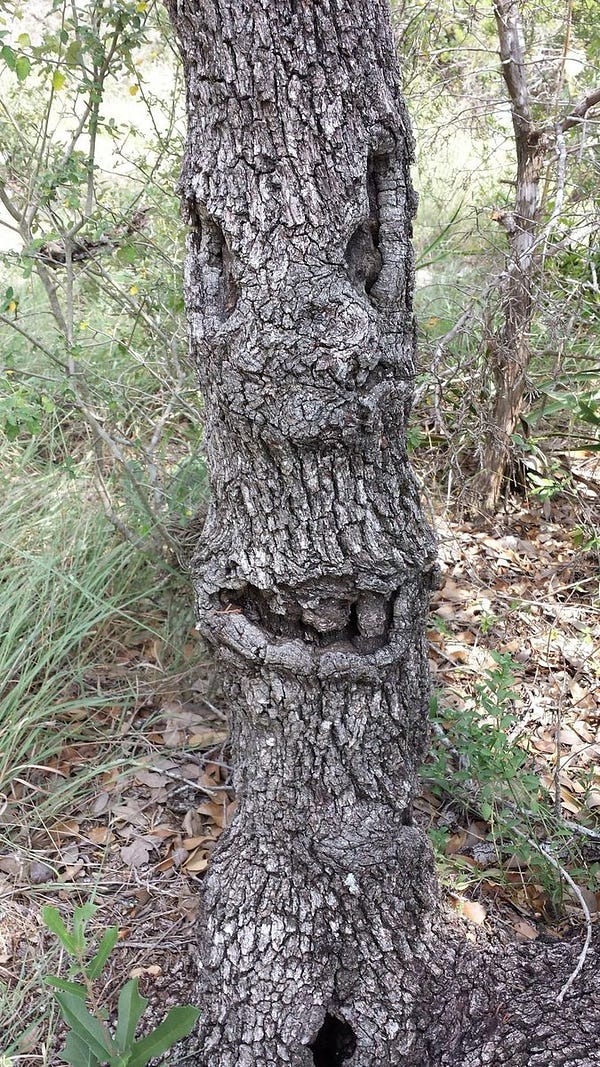



Detritus
I remember beech nut gum being available when I was a child - it was delicious! Not so sure about chlorophyll gum though…
The smooth bark of beeches tempts people to carve into them, which is a bad idea. Carved drawings or writing in tree bark are called arborglyphs and some are very old, though they can only be as old as the tree itself, different than petroglyphs, which are carvings in stone and can be thousands of years old.
Or, you could go the less-invasive route and just add faces to your trees.
Check out this amazing leaf art
I love to hear folks’ thoughts on the week’s topic - if you’ve been noticing marcescence lately, or if you just love trees, or if you have a question you’ve been naturally wondering about, please comment below!
Thanks for reading Natural Wonders! Subscribe for free to receive new posts and support my work.





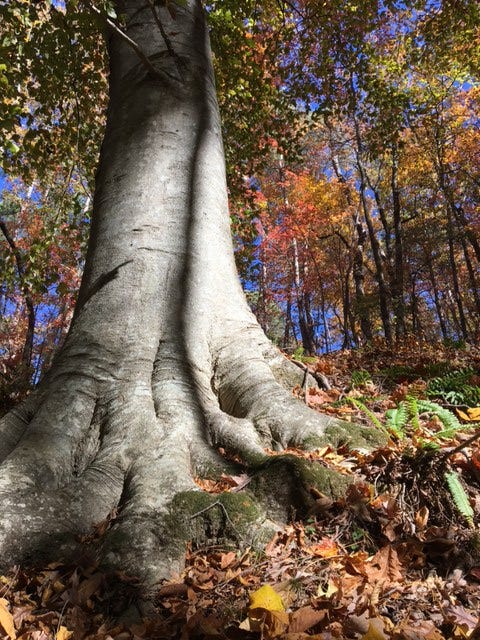
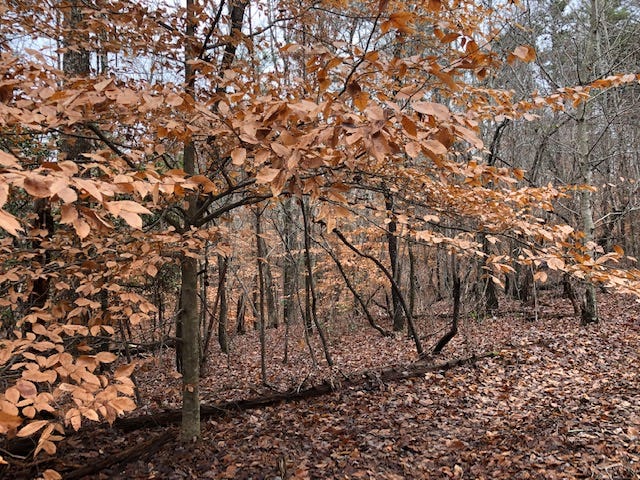
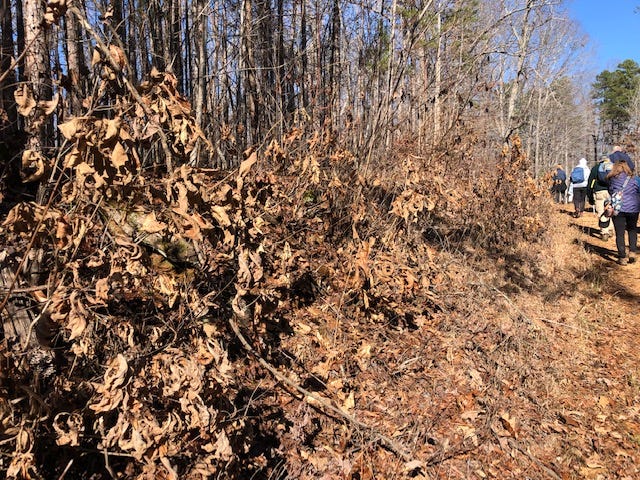
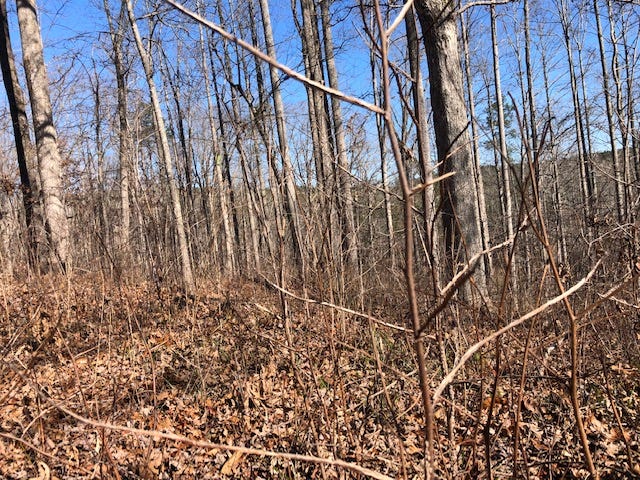

Fascinating - I never knew that was a thing. I've noticed some trees didn't lose their leaves even though they turned brown and always assumed it was because they were growing in a climate which wasn't quite right for them (i.e. in New Zealand, which doesn't have such distinct seasons).
Here in Florida, our beautiful oak trees are still shedding their leaves.